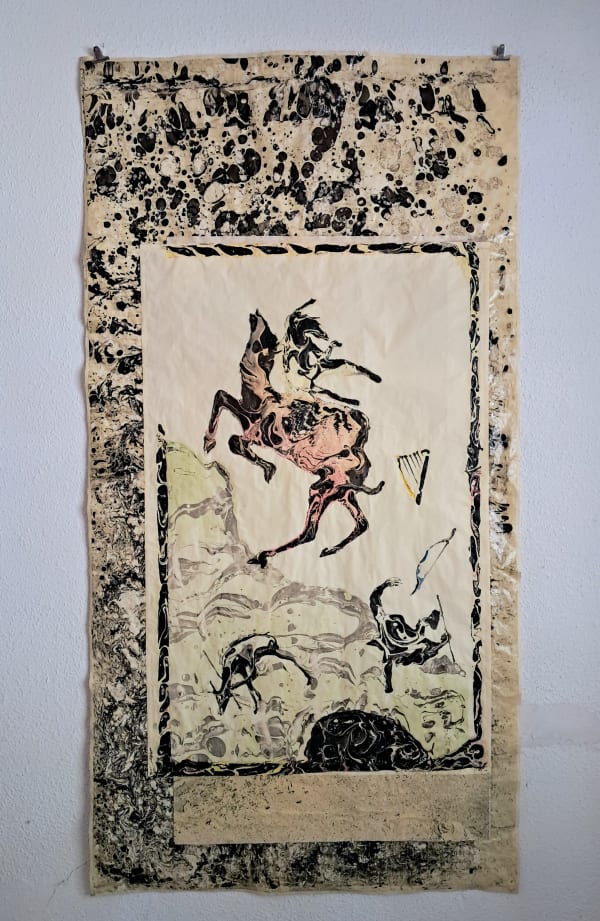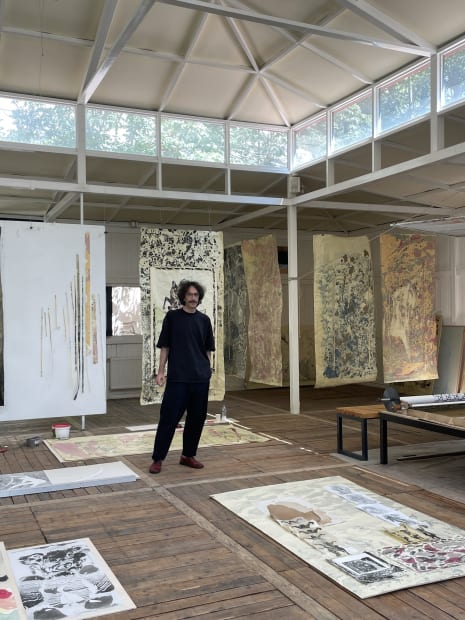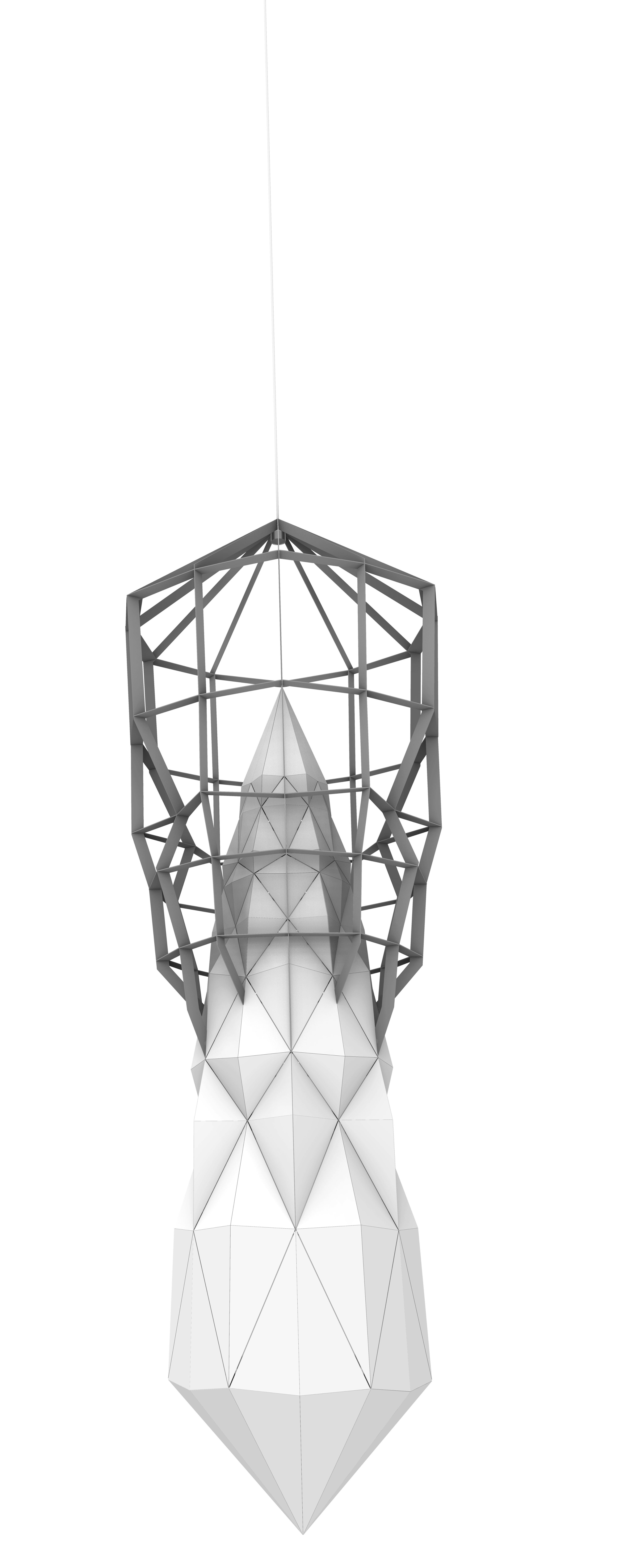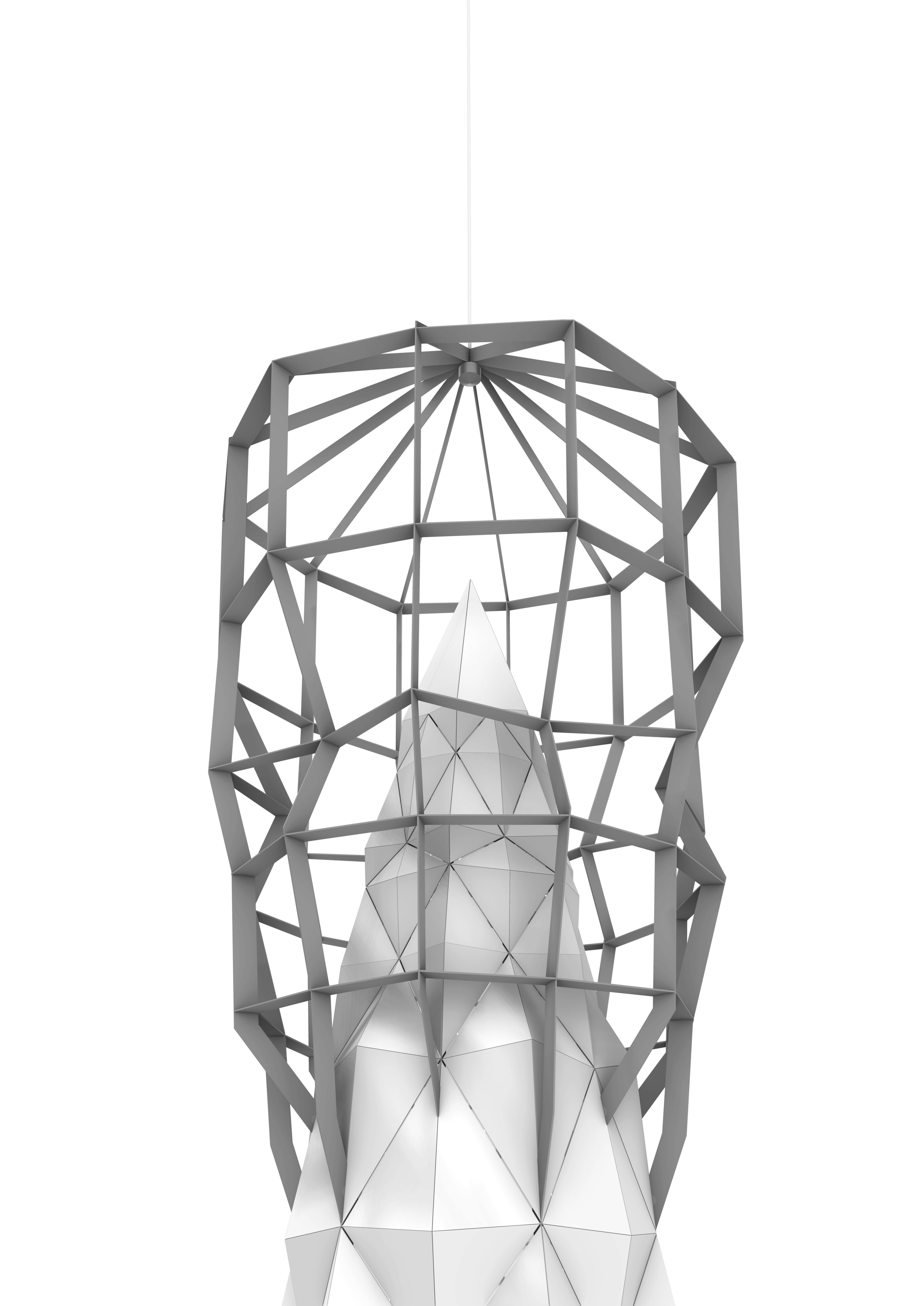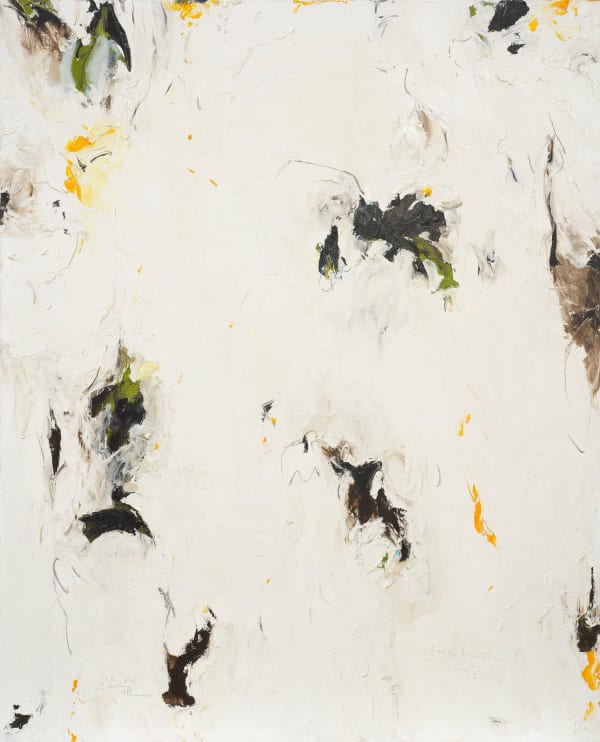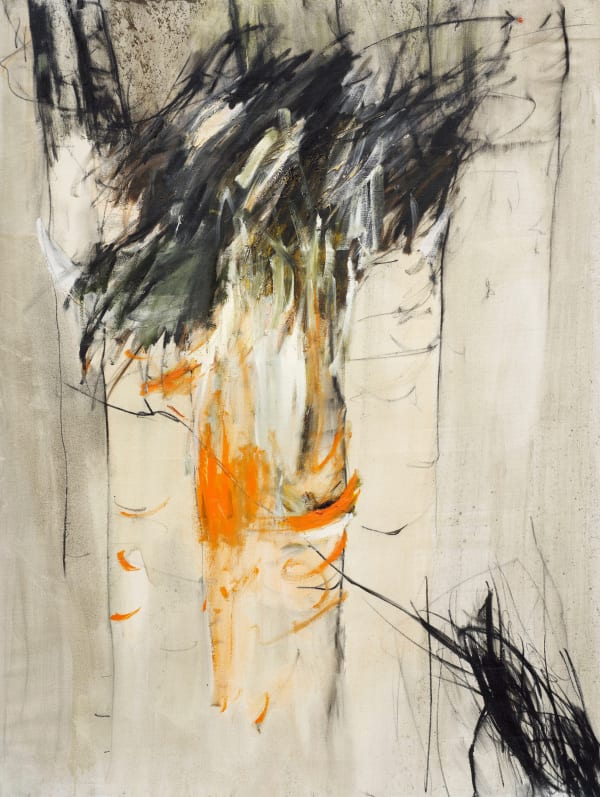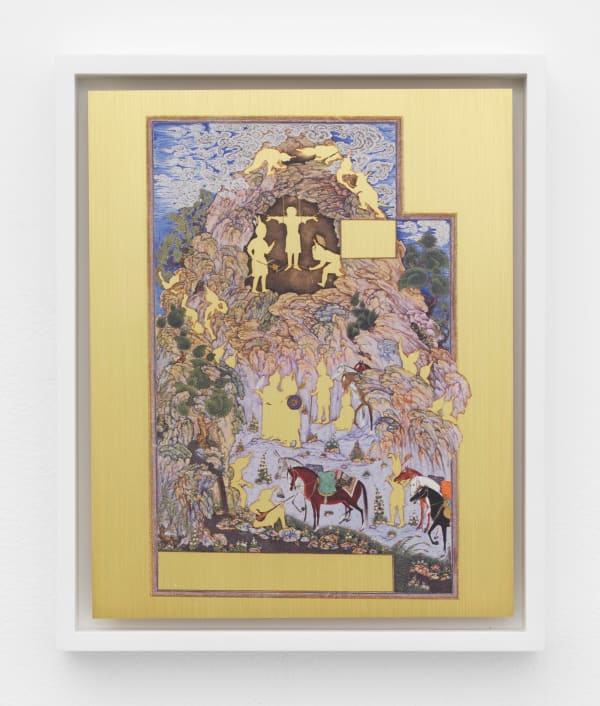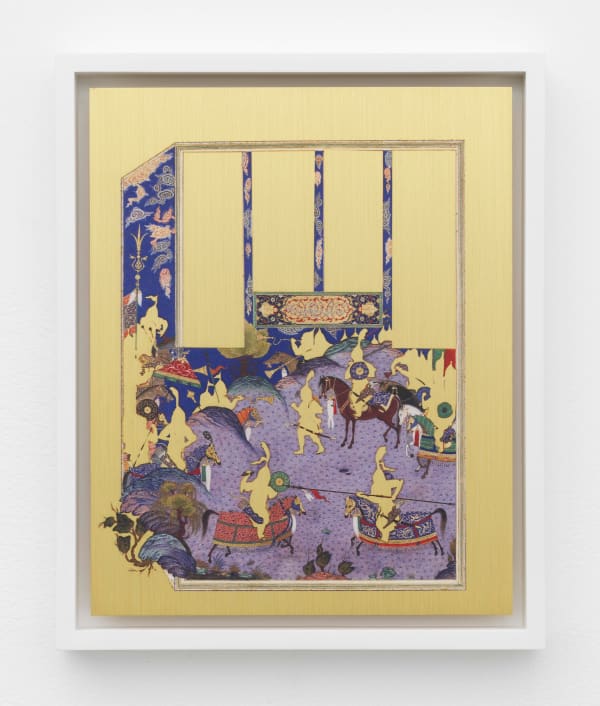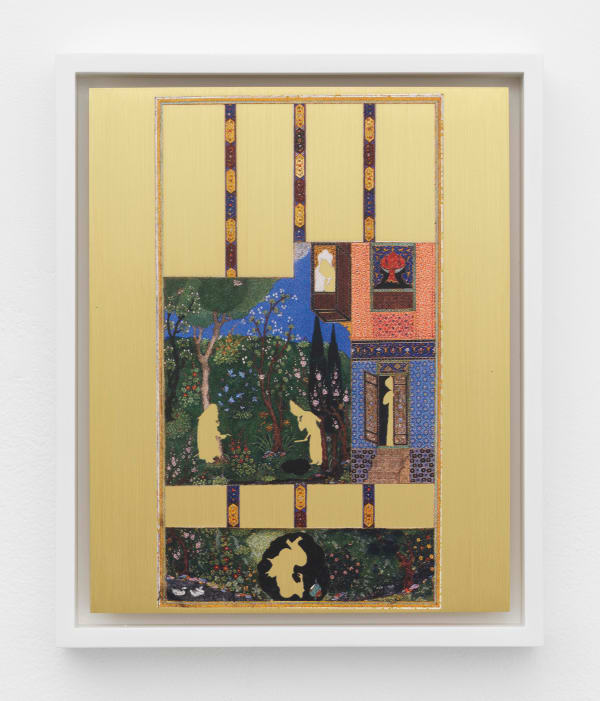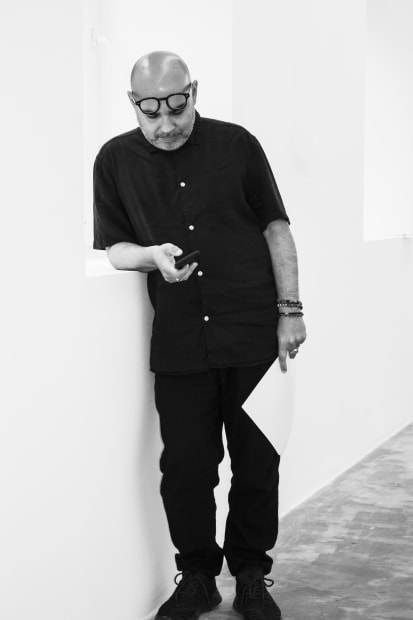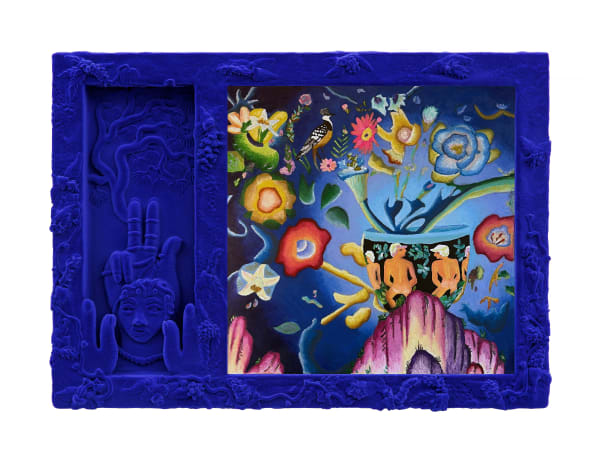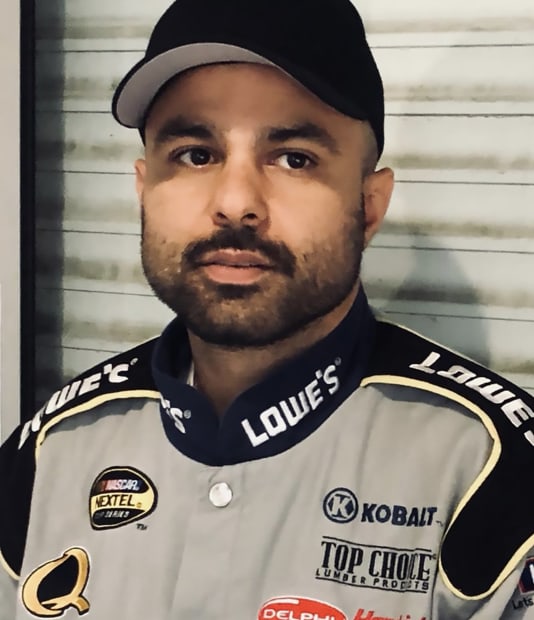-
Frieze London 2024
9 - 13 October 2024 -
At Booth A01 in Frieze London 2024, Dastan presents works by Reza Aramesh (b. 1970), Andishe Avini (b. 1974), Maryam Ayeen (b. 1985), Shahryar Hatami (b. 1983), Sahand Hesamiyan (b. 1977), Farideh Lashai (1944-2013), Meghdad Lorpour (b. 1983) and Mamali Shafahi (b. 1982). Marking Dastan’s third participation at the fair, the booth showcases works by artists whose practice is often influenced by Persian Miniature, whether through their use of image engineering, mathematics, and geometry, the works’ visual qualities, or the narratives within its subject matter. Frieze London will be on view from October 9 to October 13, 2024, at the Regent’s Park, London.
-
-
Reza Aramesh: “Study of Sweatcloth as an Object of Desire”
Reza Aramesh’s “Study of Sweatcloth as an Object of Desire” is a series of life-sized men’s underwear carved from Carrara marble, intended to be displayed on the floor. The marble is shaped through deep cutting and hand polishing by master carvers to achieve an illusion of garments in conversation with historical European sculpture traditions. Each unique work, whose title is engraved on the underside, refers to a set of historical dates and geographies of detention centers that the artist seeks to illuminate.
The ongoing investigation by Reza Aramesh into various representations of violence and its promises speaks to his formative years of having left Iran as a teenager. While Aramesh is unsentimental about his conceptual practice and rarely refers to his personal experiences in his art, there is an overall theme that addresses his unwavering commitment to human injustice. He is interested in the inflection point where empathy and cruelty can pivot at a moment's notice.
The ethos of the series is to provide an experience of materiality and to engage with the representation of soft materials transformed into carved stone. In addition, the ongoing series provides a specific language from the event of being proverbially stripped of dignity in situations of subjugation and duress. Specifically, the event of being arrested and removed to a prison. Each object represents the relinquishing of the last personal garment, a pair of underwear, before being processed from a human being into a human statistic.
-
Reza Aramesh
-

-
-

-

-
-
Shahryar Hatami: “Third Leg”
In his extensive, far-reaching, and meticulous research and practice, Shahryar Hatami focuses on ontological questions regarding ‘the image’ and the 'how' of painting. With a meta approach and by examining historical techniques and the tools that shaped observation and perception, he discusses the nature and material of ‘the image’ by creating images.
Drawing deep inspirations from the Golden Age of Persian Miniature, he takes into account a multitude of readings to understand how this school became what it became: from Islamic wisdom to color, composition, shape, content, narrative, story, and poetry. Nevertheless, according to Hatami, “to elaborate the image is to go through a process of translation.” He considers image-making a distinguished and independent language, and to him, discussing the details of the how and why of the painting destroys its magic. In his view, what does not destroy the magic is to “use the language of ‘the image’ to explain the image.”
He believes the technologies of the time influence how we see and create art. In his most recent series, he first draws his images on the water and then uses a transfer technique from the early 1500s to carry it into the paper. In this process, he minimizes the inherent unpredictability of such technique through precise tool-making, producing monoprint-like works. These faded, dreamlike images resemble distant memories –washing out yet revealing. Hatami's subjects often draw from classic legends, like Bahram and Azadeh, as well as in his depiction of Mani’s death, where he reflects on Persian miniature’s vibrant portrayals of violence.
-
-
Shahryar Hatami
Shahryar HatamiVideo by Alborz Kazemi -
-
Sahand Hesamiyan: “Pardis II”
Sahand Hesamiyan’s “Pardis II” is part of his Pardis series, exploring the significance of the cypress tree in Persian gardens within Iranian culture and architecture. In Iranian tradition, Pardis symbolizes a walled garden representing paradise, peace, and divine order.
Inspired by Karbandi, a key feature of Iranian architecture, the sculpture metaphorically represents the cypress (Sarv), a symbol of freedom, resilience, and eternity. Deeply tied to Zoroastrian tradition and Persian mythology, the cypress appears in palaces, religious sites, and gardens, embodying immortality and spiritual perseverance.
Prominent in Persian poetry, particularly in works by Hafez and Rumi, the cypress signifies beauty, strength, and freedom. Its evergreen nature and strong form symbolize immortality and a steadfast spirit, making it a profound cultural and spiritual symbol in Iranian art and architecture.
-
-

-
-
Farideh Lashai: Untitled from “The Trees” series
Farideh Lashai's paintings reveal her profound ability to merge traditional and contemporary aesthetics. Lashai’s work draws on the subtleties of natural landscapes, transforming them into reflections of both external environments and inner emotions. Her paintings are not mere depictions of nature; instead, they evoke the essence and spirit of the natural world, blending delicate abstraction with a vibrant yet muted color palette. For her, nature is connected to the human experience and not an immaculate externality.
Lashai’s approach to abstraction is deeply influenced by her broad artistic background, including her studies in decorative arts in Europe and her deep connection to Iranian artistic traditions. Her work resonates with the influence of European modern movements yet remains distinctly her own, marked by an ethereal quality that avoids direct representation. Instead, Lashai’s brushwork captures fleeting moments, the ephemeral beauty of blossoms, and the transient moods of nature, giving viewers a sense of immersion in a contemplative, almost dreamlike state.
In a 1991 interview with critic Ahmadreza Dalvand (Gardoon, Issue 7), she elaborates on her view on nature and takes inspiration from it through personal experience: “...nature has always had an extraordinary pull on me, not as an unrelated phenomenon outside of my existence, but as something intertwined with the internal struggles of humanity, addressing its spiritual conflicts and questions—perhaps related to ontology. Its richness, which never diminishes, primarily astonished humanity over the years. As we age, gain experience, and explore the myriad corners of this colorful world and its preoccupations, we come to realize how delightful this astonishment is. I mentioned that the richness of this nature still amazes me, a wonder that is essential for artistic work, whether it be painting, poetry, or music. Then, there’s the balance and unique aesthetic of each piece within this boundless space at various moments. Nature alone is not interesting to me; it is devoid of spirit and meaning and disconnected from the human soul. It is only through the emotional and spiritual conditions of the observer that it comes to life.”
She sees human beings as an integral part of nature: “...the vast underwater expanse, the scorched and the fertile land, or trees with roots in the soil reaching towards the sky seem to connect earth and time. The way these vertical and diagonal lines intertwine with one another creates a space filled with the excitement of existence. Humanity is also a piece of nature. Indeed, it is in separation from it that one becomes lost—a necessary separation imposed on humanity by the course of civilization. The trees are no longer those eternal trees, nor is the sky that calm blue light spread across the universe… In my work, it is from my perspective that nature takes shape; it is the inner self of humanity that projects its specific concepts onto nature in various states, and nature becomes a tool for expressing human emotions, potentially reflecting the inner face of humanity.”
-
 Portrait of Farideh Lashai Courtesy of the Lashai Foundation
Portrait of Farideh Lashai Courtesy of the Lashai Foundation -
-
Meghdad Lorpour: “The Gripping Claws of Waves” from the “Nashi Wind” series
Meghdad Lorpour’s recent series, “Nashi Wind,” follows and builds upon his two previous series, “Daryábár” (2018) and “Dislocate and Displace” (2021). Since 2014, the artist has been studying Iranian bodies of water and the role of water in shaping geography, landscape, mythology, culture, and life in central and southern Iran. Most of the works he has produced since beginning these studies take influence from the natural landscapes of Fars Province, an ancient cradle of human civilization as well as a vast region of natural wonders.
In addition to the role of nature in shaping the geography and landscape of Fars, thousands of years of human life and intervention have left considerable marks on the region. During his work, Meghdad Lorpour, who is currently based in Tehran, some 700 kilometers north of his hometown of Shiraz in Fars Province, often supplements his desk research with travel, observation, documentation, and a contemplative approach to painting.
In his research, the artist engages in comparative analyses of historical data, older accounts, sketches and photographs, personal memories of the locations in the past, and present-day observations. This approach would often lean towards corroborating the substantial changes in the natural landscapes as well as the difficult truth about the fast-paced, dire effects of climate change in the region. While drought and climate warming have been and remain global issues, their severity has been felt especially intensely in Middle Eastern countries.
These, along with the many human factors, notably mismanagement of the already-scarce resources and administrative failure as well as regional disputes, are parameters that have continuously contributed to environmental degradation, wars over water, mass immigration, and much more. The artist frequently visits the sites in Fars and southern Iran, including the Tangab area, the now-dried Lake Parishan, Lake Bakhtegan, Lake Maharloo, Hamun Oasis, as well as Goor Plain and Hengam Island, all of which were home to ancient human settlements, possessing an aura of mythological history to them. Gathering images and inspirations, he then starts work on his compositions, taking ideas from both historical accounts, i.e., the experience of others, and his observations and research.
Absence is a key theme in Lorpour’s compositions and perspectives —on one hand, many of the sights he paints either no longer exist as they have been depicted in the pieces, and on the other hand, the artist controls the viewer’s range of vision and field of view by limiting perspective, depth, frame, and visual cues. In his three-dimensional papier-mâché pieces, the same effect is intensified by introducing a sense of ambiguity —while appearing as eerily familiar objects; one cannot pinpoint what these are and the purpose they serve. They appear like ancient objects that have continued to live on through history, gradually reshaped and morphed by the passage of time, the introduction and propagation of culture, the greedy gaze of humanity, and gently-erosive marks of the cycle of life.
Similar to when one who has embarked on a journey long ago suddenly finds themselves far away from home, the landscapes, surroundings, and objects feel either too generic or completely unfamiliar, and upon confusion, the traveler’s faculty of recall returns with no answers, general recollections or distinct memories. The artist looks around, casts his gaze on a few uncanny configurations in the setting, studies the mountains and waters in his peripheral vision or the distant backgrounds, and continues his imaginary immigration, determined yet constantly unsure.
-

Meghdad Lorpour
The Gripping Claws of Waves from " Nashi Wind" Series, 2024Acrylic on canvas
112 x 260 cm
44 x 102 1/2 in -
-
-
-

-
-
Mamali Shafahi and Domenico Gutknecht: “Eden”
“Eden”, a collaboration between Mamali Shafahi and Domenico Gutknecht, is a homage to the late painter David Caille (1986-2014) who Mamali befriended, collaborated with and shared a studio with in Paris. ‘Eden’ is a sentiment deeply rooted in cultures and religious traditions around the world, reflecting a universal desire for solace in the face of death. But in a world of conflict, turmoil, and uncertainty, it also serves as a message of hope and a call to build a more compassionate, just society.“Eden” marks a new, more contemplative phase in Mamali Shafahi’s artistic output –a new example of artistic collaboration, and an unexpected return to a traditional medium: oil pastels, set jewel-like in high-relief casings.
Mamali has always deliberately involved others in his work. Already, in his earliest performances, photographic and installation projects, he sought to engage art-school staff, students and friends. In Paris, he shared a studio with David Caille, a pupil of Peter Doig in Düsseldorf, and while each continued their individual practice, they worked together on a series of joint projects.
In 2014, aged 27, David took his own life. This tragedy had a profound impact on Mamali, who turned away from painting, David’s core medium, to focus on video, film and VR. He started investigating parent-child relations as a potential bridge between the traditions of the past, our present, and a technological future (Daddy Sperm). And so he began to involve his parents, retired in Iran, in his work. He asked his father, Reza Shafahi, an ex-wrestler then 72, to draw, looking for signs of genetic transmission in their respective work. Quite unexpectedly, Reza became an artist in his own right. He has his own exhibitions, solo or with Mamali, and at 84, still painting daily, is now the subject of a monograph.
In a further twist in this tale of intergenerational exchange, Mamali pursued links with his cultural background in new works inspired by the variegated fruits of his father’s imagination –the flocked epoxy sculptures that are now one of his ‘signatures’ (Heirloom Velvet and subsequent projects).
-

-
Frieze London 2023








